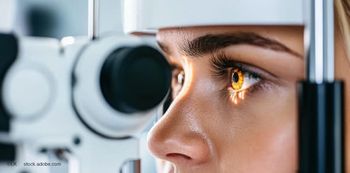
- Ophthalmology Times: July/August 2025
- Volume 50
- Issue 4
AI applications in cataract surgery: A surgeon’s perspective
Real-time data analysis and intelligent automation help streamline key steps.
Surgeons strive for precision, efficiency, and consistency in every procedure they perform. Integrating artificial intelligence (AI) into laser-assisted cataract surgery (LACS) is a significant leap forward in achieving these goals. In my experience, a robotic cataract laser system (ALLY; LENSAR, Inc) incorporates 2 AI-driven functions—image analysis and laser fragmentation optimization—to streamline surgical planning and execution.
Precision in 3D lens reconstruction and image segmentation
AI plays a crucial role in the segmentation of diagnostic imaging, another area where precision is paramount. This platform leverages deep neural networks trained on thousands of Scheimpflug images to accurately delineate the cornea and lens capsule, even in the presence of dense cataracts.
In this 3-part article, ophthalmologists explore how robotic and AI technologies are refining laser-assisted cataract surgery.
• Vance Thompson, MD, details how robotic integration in the operating room enhances surgical precision, efficiency, and patient outcomes while preserving surgeon control.
• Gary Wörtz, MD, focuses on astigmatism management, showing how robotic laser arcuate incisions and the Wörtz-Gupta formula can reduce variability and optimize visual results.
• Arjan Hura, MD, examines AI’s role in cataract surgery, highlighting real-time imaging analysis and energy customization to streamline procedures and improve consistency.
Studies have shown that AI-driven segmentation can repeatedly identify the boundaries of these structures at a pixel level and reconstruct the surfaces with remarkable accuracy, reducing the risk of errors during cataract surgery.1
READ: Robotic precision: Elevating the state of laser cataract surgery, by Vance Thompson, MD
Moreover, AI-assisted pupil and limbus segmentation further enhances intraoperative alignment and iris registration, improving the predictability of toric IOL placement and astigmatism correction.2 Although manual marking may still be performed as a backup, the automated alignment capabilities of a robotic cataract laser system significantly streamline the process and offer an added layer of precision.
AI-driven customization for cataract density
A challenge in LACS is determining the ideal laser energy and fragmentation pattern for each eye. Traditionally, surgeons rely on predefined settings, such as standard or dense cataract modes, to dictate energy levels. Although effective, the approach lacks nuance and often requires intraoperative adjustments. Alternatively, robotic laser cataract surgery uses AI to analyze vast data sets of cataract images to automatically tailor energy settings based on cataract density, optimizing efficiency while minimizing phaco energy.
MORE: Dialing in precision: Astigmatism management with arcuate incisions, by Gary Wörtz, MD
Like many surgeons, I use predefined laser fragmentation patterns depending on the specific case—whether it’s a routine cataract, a denser nucleus, or a case involving a light adjustable lens where precise capsulotomy sizing is critical. Rather than manually adjusting these settings for each case, a robotic cataract laser system allows me to select a predefined pattern, and AI fine-tunes the laser energy parameters in real time. I now make fewer intraoperative adjustments, resulting in reduced case times, clearer corneas postoperatively, and enhanced consistency across procedures.
One of the most rewarding aspects of AI integration in laser cataract surgery is how it enhances surgeon confidence. Knowing that my surgical parameters are continuously optimized based on real-world data allows me to focus on the nuances of each case rather than micromanaging settings. This efficiency translates to a smoother surgical experience—not just for me but also for my patients.
Arjan Hura, MD
Hura is in private practice at Maloney-Shamie-Hura Vision Institute in Los Angeles, California. He is a consultant to LENSAR, Inc.
References
Morley D, Evans M. Scheimpflug image segmentation using deep learning. Presented at: Association for Research in Vision and Ophthalmology 2024 Annual Meeting; May 5-9, 2024; Seattle, WA.
Morley D, Evans M. Multi-device pupil, limbus, and eyelid segmentation using deep learning. Presented at: Association for Research in Vision and Ophthalmology 2024 Annual Meeting; May 5-9, 2024; Seattle, WA.
Articles in this issue
4 months ago
The future of imaging is out of this worldNewsletter
Don’t miss out—get Ophthalmology Times updates on the latest clinical advancements and expert interviews, straight to your inbox.













































.png)


